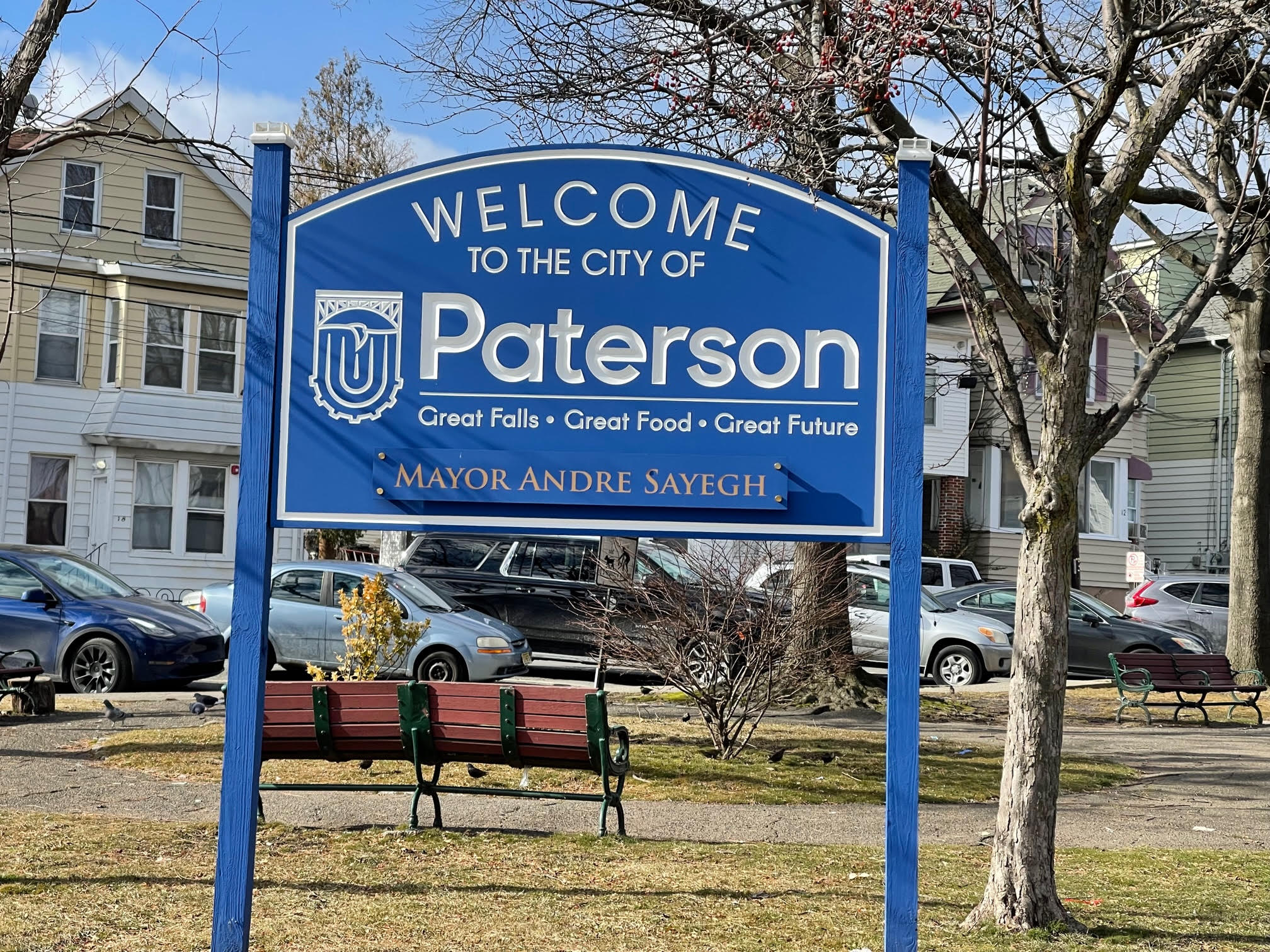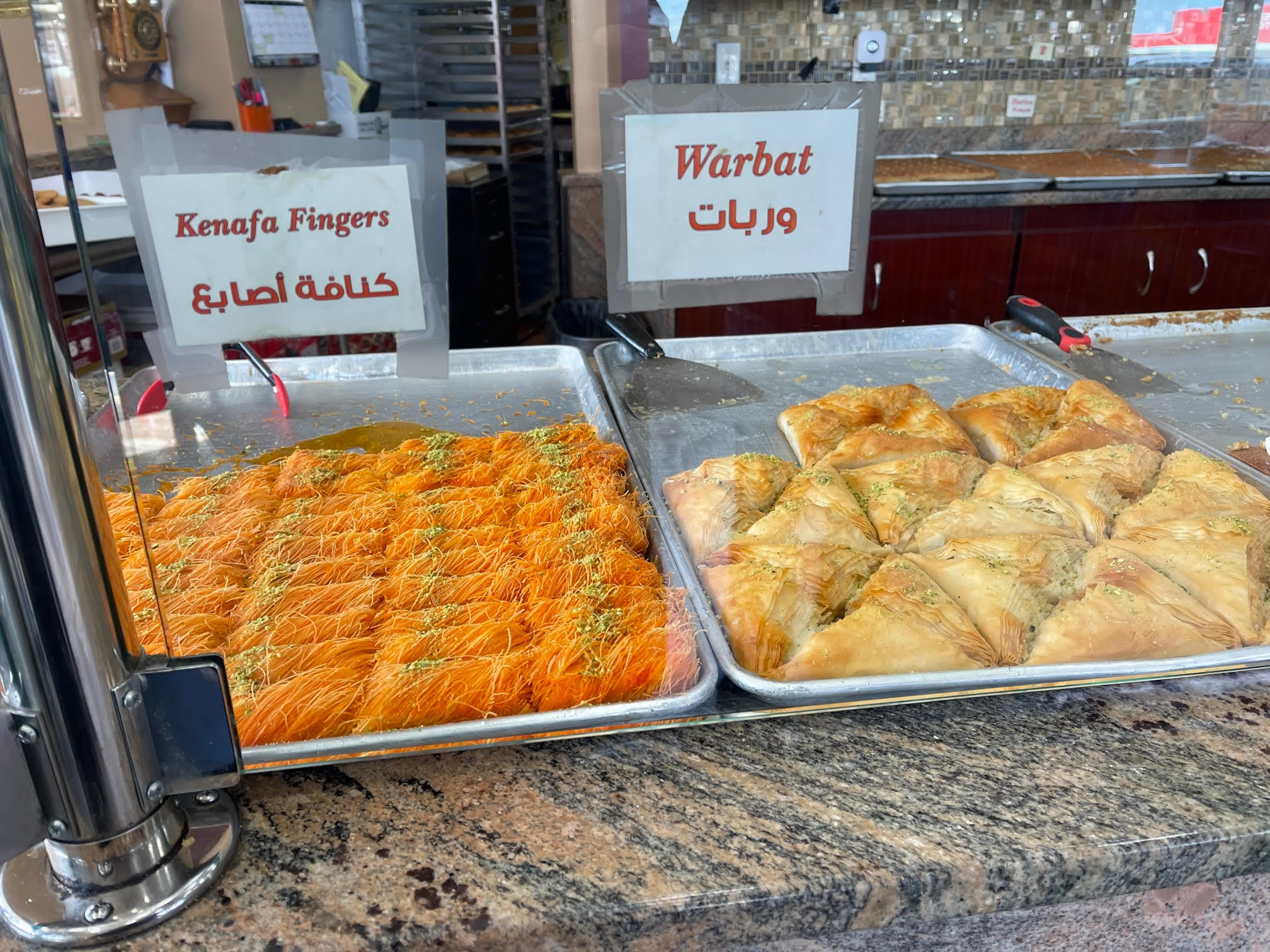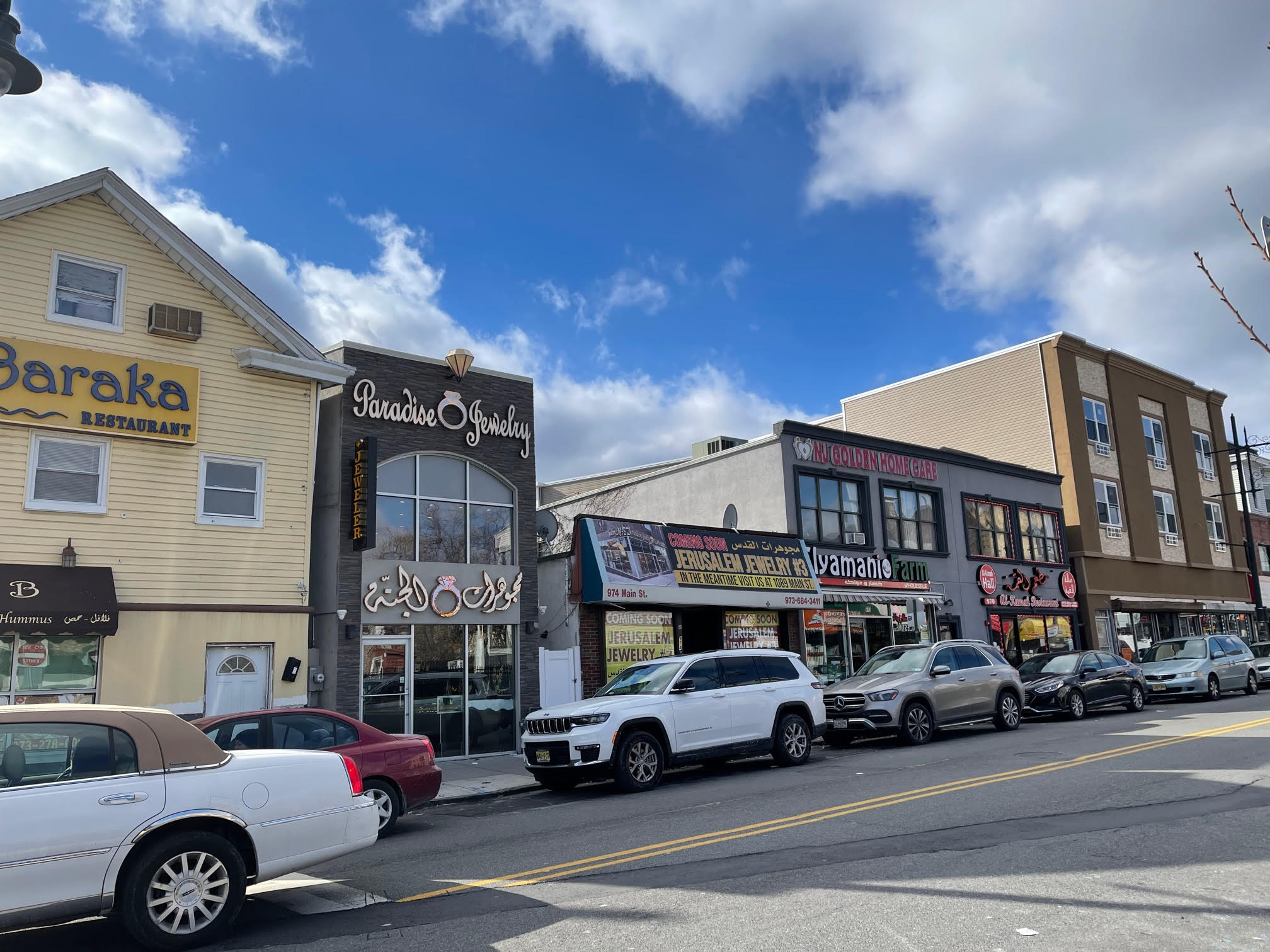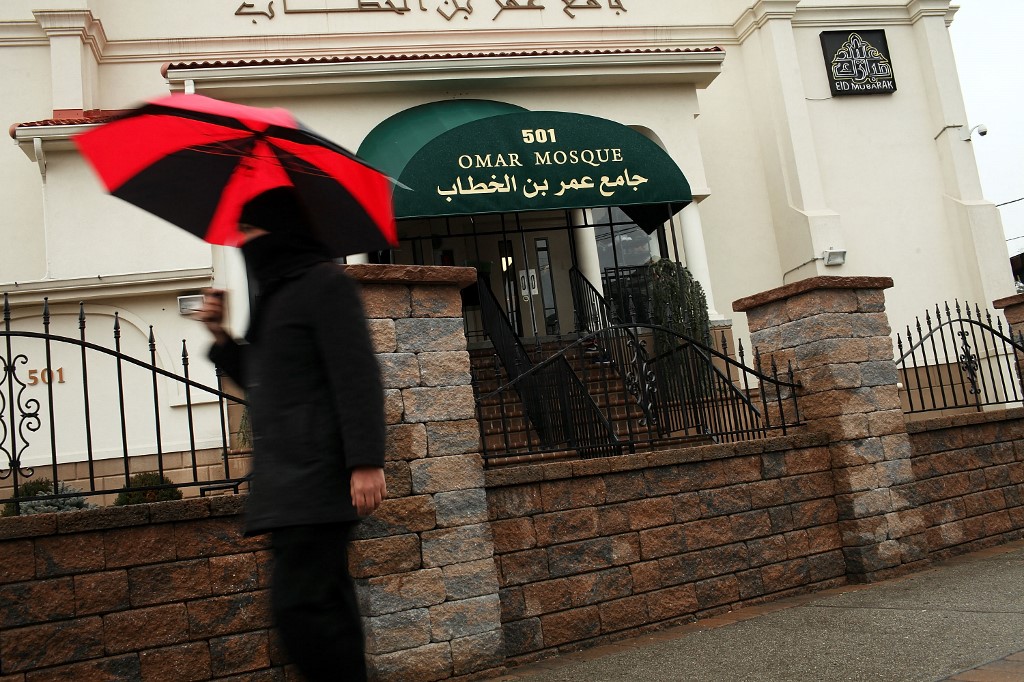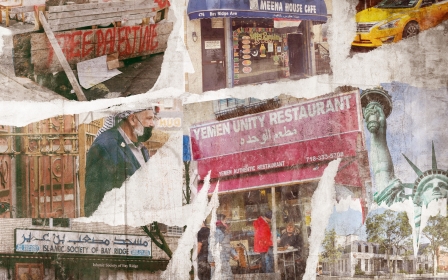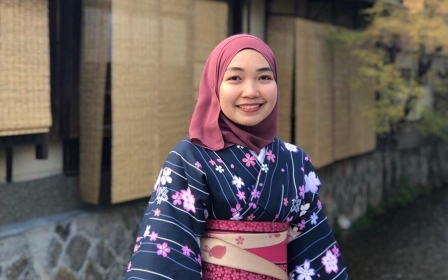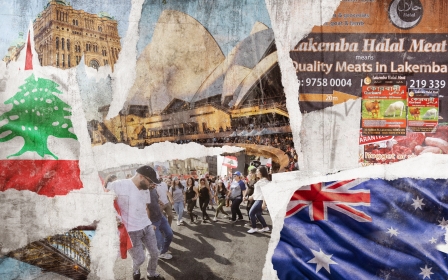Inside the diverse Arab community of New Jersey

Sitting on the eastern seaboard of the United States, the state of New Jersey has a long history of immigration from communities around the world.
From the Hispanic population that has continued to flourish since the 1970s, to Europeans who moved there in the 19th and 20th centuries and African Americans who made the state their home following World War Two, New Jersey has long been a true American melting pot.
The history of the state's diverse Middle Eastern population is a unique part of this rich history.
The origins of the community can be traced back to the early 19th century, when Syrian immigrants, mainly Christians, arrived to work alongside the Passaic River. A system of raceways and water wheels around the Great Falls of New Paterson powered mills that were renowned for their manufacture of cotton, silk, jute, weaving and dyeing, and also became a key location for Arab workers.
Soon, the families started to settle in the area, and by the turn of the 20th century, around 35 silk mills in Paterson were owned by Syrians. In 1914, a hydroelectric powerhouse was completed, operating there with its original equipment until 1969.
New MEE newsletter: Jerusalem Dispatch
Sign up to get the latest insights and analysis on Israel-Palestine, alongside Turkey Unpacked and other MEE newsletters
Today, the Arab community in the town of Paterson, New Jersey, is well established, with an entire street lined with restaurants and business serving up fresh dishes locals say are just as good as those available back home.
Melting into society
Abu Fahim, 57, who moved to Paterson from Palestine in 1985, says that many of the Arabs in the community are proud of their descent, and enjoy greeting each other in Arabic, maintaining a sense of familiarity and home.
According to Fahim, the Syrian American community was one of the first to arrive in the Paterson area.
“They were the first coming to this country in general and the Paterson area,” he told Middle East Eye. “They melted into the community and society, and became a part of it. They took positions in government and other organisations.”
Fahim says that a lot of the people he has met in the community have held onto their language and roots, and still identify as Syrian when asked.
Immigrants did not always come to Paterson directly from the Arab world. “My uncles came in from Brazil, I would say in the early 60s,” Abu Fahim said.
“There were people ahead of them in the Paterson area. My two older brothers actually worked in a dye factory,” he added.
While there was a period where Arab migration to Paterson halted due to immigration policy restrictions, there was another wave of migration following the Immigration and Nationality Act of 1965. With the change of law, came an influx of Jordanians and Palestinians making Paterson their home.
Many of them have made huge strides, flourishing and starting their own families. Of Syrian heritage, Mohamed Khairullah is just one example, becoming the Democratic mayor of the New Jersey borough of Prospect Park.
Paterson also made headlines when it elected an Arab American mayor, Andre Sayegh, in 2018.
The Syrian-Lebanese promised to unite the city, and gained widespread support from a range of communities within the area. The 48-year-old has been celebrated for his campaign, which centred around reducing crime, bringing together the diverse groups in the town and promoting business.
A flavour of home
On Main Street, a bustling high street in the heart of Paterson, locals can get their hands on everything from mansaf, a popular Jordanian rice and meat dish, to the widely coveted and syrup-drenched Nabulsi kunafa.
There is also no shortage of shawarma shops in the area. “My earliest memories of Paterson is probably like my first time having shawarma,” Wissam Kanaan tells Middle East Eye.
Kanaan is the advocacy coordinator for the New Jersey branch of American Muslims for Palestine, a grassroots organisation that focuses on education and community-building. For him, the diversity of the community is a positive thing, as it has brought together different flavours and people.
“That’s probably my most vivid memory in Paterson. My first shawarma, which is weird. It was from this place called Sultan that’s not there anymore unfortunately,” he said, reminiscing on his time spent in the area.
To cater for the diverse population, most Arab restaurants will have photos of the traditional foods on the walls of their establishment as well as in menus, to make it easier for people who are ordering the cuisine for the first time.
'That’s probably my most vivid memory in Paterson. My first shawarma'
- Wissam Kanaan, advocacy coordinator
Others have also noticed a growth in Middle Eastern influence in the town.
“I can’t even remember which stores were around to be honest with you because I was so young back then.
"But I do know that there was a presence of Arab stores in the 80s when I grew up. And more recently, they have just expanded exponentially,” says Rana Sabagh, the social services manager of Islamic Centre of Passaic County (ICPC).
For food lovers, the area provides plenty of options to satisfy cravings.
“The Nut House is mihmas, so they literally prepare the nuts in store. They roast, so everything is super fresh,” Kanaan says, about a much loved roasted nut shop in the area. “They also sell little candies you would buy on the street in Ramallah.”
Sabagh also believes the explosion of Middle Eastern eateries in the town has opened up the cuisine and culture to the wider, non-Arab population.
“Recently, you see so much different variety. You see not only food-based stores, you see pharmacies, you see lawyers, you see doctors. You see different people in different areas of work.”
Sabagh says that the number of businesses that have opened to serve the Arab community have proliferated in recent years, in an effort to cater for the community’s needs. This includes everything from travel agencies to gold jewellery stores.
Shisha cafes, which are popular around the Middle East, where young people will typically go to mingle and enjoy their evening, have also become a common sight. Over time, more of these cafes have sprung up, with locals choosing to smoke the flavoured tobacco after a meal of traditional Arab food.
The mosque at the heart of the Arab community
Selaedin Maksut is the executive director of the New Jersey chapter of the Council on American Islamic Relations (CAIR). His grandfather, who immigrated to Paterson in the 70s, first attended a mosque called Ulu Cami Mosque.
“Turks, Albanians, Arabs, Pakistanis, everyone would go to Ulu Cami,” Maksut said. He explained that this mosque was the beginning of a sizeable Muslim community.
“But not too long after, Masjid Omar was established. Omar is only a few blocks over on Getty Avenue.”
Maksut explained that Masjid Omar attracts more Egyptian congregants, while ICPC attracts predominantly Arab congregants and a small population of African-American Muslims.
“And today, it’s a very robust, very diverse community,” Maksut said, explaining that a Bengali community is forming with mosques, butcher shops and restaurants supporting it.
For locals the mosque has become the centre of the community, which not only allows people to gather, worship and celebrate occasions together, but also provides financial and business opportunities for those who go there.
“It also becomes a fertile ground for economic development and families to continue growing and buying property. So it’s not too long after you find plenty of halal butcher shops being established, and cafes, restaurants and markets,” he continued.
The ICPC has made it its mission to serve the community, from funeral services to marriage services. The organisation also puts together an inter-faith iftar, inviting members of the community and people from various professions.
Sabagh also described planning activities for children, providing job recruitment services along with financial assistance, transportation services and other supplies.
Some other initiatives they organise are toy drives with churches and hospitals around the festive Christmas season. In the mosque, worshippers will take part in projects that help the disadvantaged. Some of those who have been on the receiving end include Afghan refugees.
“We're going to have them come enjoy some of their Afghani food because that's cultural to them,” Sabagh said about an event planned for March 2022. “It's very important for them to have that element of their country here to make them feel comfortable.”
This article is part of a series. To find out more about other Middle Eastern communities around the world, stay tuned for the next piece, due to be published next week.
Middle East Eye delivers independent and unrivalled coverage and analysis of the Middle East, North Africa and beyond. To learn more about republishing this content and the associated fees, please fill out this form. More about MEE can be found here.



